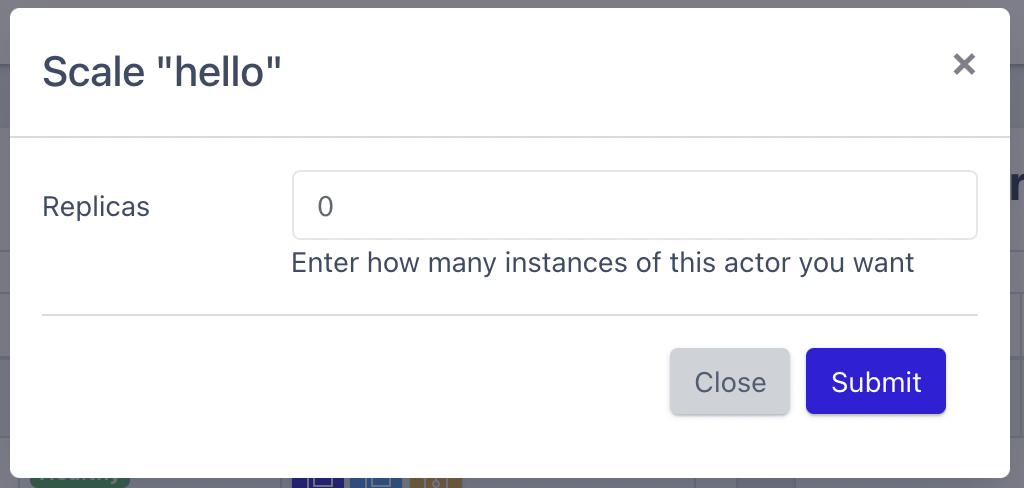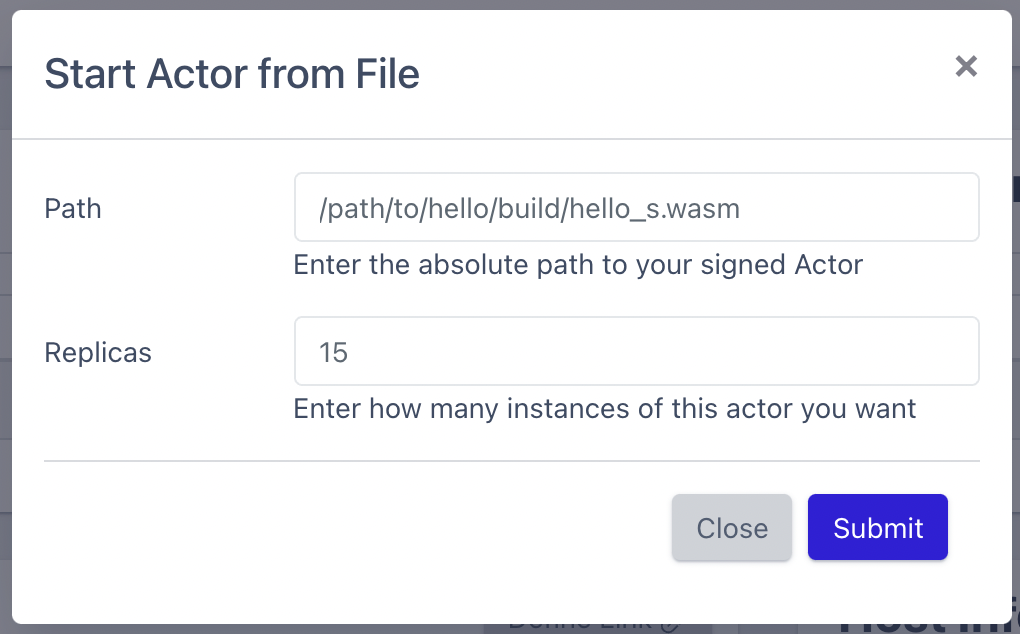Customizing the actor
Prerequisites
To use the hot reloading feature you'll need to install one more utility to ensure the host can monitor your actor file for changes. The following instructions for your operating system will ensure you are ready for the next section.
- Ubuntu/Debian
- Fedora
- Other Linux
- Macos
- Windows
- Docker
apt-get install inotify-tools
yum install inotify-tools
Refer to https://github.com/inotify-tools/inotify-tools/wiki#inotify-tools to find your package manager of choice's instructions
Ensure you've run xcode-select --install which installs all necessary tools. You'll get the following message if you've already run this command:
xcode-select: error: command line tools are already installed, use "Software Update" to install updates
Refer to https://github.com/thekid/inotify-win#inotify-win for Windows instructions.
We don't currently recommend hot reloading with Docker as the container filesystem is not the same as your development machine's filesystem. Technically this could be accomplished with a filesystem mount, though this introduces a few variables and we highly recommend using local development with wash instead.
Setting up Hot Reloading
This section will introduce you to the process wasmCloud developers use to rapidly iterate on their actors. Introduced in wasmCloud v0.51.0, the Hot Reloading feature allows the dashboard to watch your signed actor file and automatically replace all instances of that actor upon a file change. This happens quickly (blink and you might miss it!) and tightly constrains the developer feedback loop so you can spend more time developing and less time waiting.
Let's start by scaling down our hello actor if it's still running from a previous step. Look for the yellow scale button  in the 'Actions' column, and set the replicas to
in the 'Actions' column, and set the replicas to 0 before hitting Submit.

Now, let's start the actor again using the "Start Actor" dropdown, but this time let's use the From File (Hot Reload) option. You'll be required to supply the absolute path 1 to your actor file, and you can choose a number of replicas to start as well. Luckily, we have an easy way for you to get the absolute path of your actor. Simply navigate to your actor project directory and run:
make target-path-abs
Copy the path printed by this command into the and enter it in the Start Actor form along with any number of replicas, and hit submit.

You should now see your actor with a hot reloading status badge, and you're ready to proceed to the next section and make changes.

Making modifications (Rust)
Our new actor has come pre-equipped with a message handler that generates a text string in the body of the response. By default, the text is "Hello World", and the greeting changes if the URL contains a name parameter. We will modify the business logic of the actor to select the greeting, using a second URL paramter. In this exercise, you will go through the process of editing code, recompiling, and updating the actor in a live running system.
The new parameter that selects the greeting will be called msg. If msg is "hello" (or if there is no msg parameter), the greeting will be "Hello NAME". If msg is "bye", the greeting will be 'Goodbye NAME', and so on.
async fn handle_request(
&self,
_ctx: &Context,
req: &HttpRequest,
) -> std::result::Result<HttpResponse, RpcError> {
let name = form_urlencoded::parse(req.query_string.as_bytes())
.find(|(n, _)| n == "name")
.map(|(_, v)| v.to_string())
.unwrap_or_else(|| "You".to_string());
let msg_id = form_urlencoded::parse(req.query_string.as_bytes())
.find(|(n, _)| n == "msg")
.map(|(_, v)| v.to_string())
.unwrap_or_else(|| "hello".to_string());
let response = match msg_id.as_str() {
"hello" => format!("Hello {}", name),
"bye" => format!("Goodbye {}", name),
"hey" => format!("Hey {}, what's up?", name),
_ => format!("I didn't understand that, {}", name),
};
Ok(HttpResponse {
body: response.as_bytes().to_vec(),
..Default::default()
})
}
In src/lib.rs, replace handle_request with the code above. Since we aren't releasing a new version of the actor yet, we don't need to change the version number in Cargo.toml.
Run make to build the actor and re-sign it. The host replaces all running instances of the actor with the new version, thanks to the hot reload feature, and re-links them with the HttpServer capability provider using the link parameters already provided. It is not necessary to re-issue a link command.
Let's try out the new actor:
curl 'localhost:8087/?name=Alice&msg=hello'
curl 'localhost:8087/?name=Bob&msg=bye'
curl 'localhost:8087/?name=Carol&msg=hey'
You've just completed a full development cycle of test, edit, recompile, run - all while the host continued running. If an actor is handling a message when an update occurs, the host waits for the message handler to complete, then swaps in the newer WebAssembly module before the next message is processed.
This is the way production software services were meant to be.
No-fuss version management. Secure software supply-chain. Zero-downtime upgrades.
- Because we're running the wasmCloud dashboard in a browser, the
Upload Fileform is prevented from knowing exactly where files are on disk for security reasons. However, since the host process, an Elixir application, has access to files on disk, an absolute path (or relative path from where you started the host) is accessible for hot reloading.↩